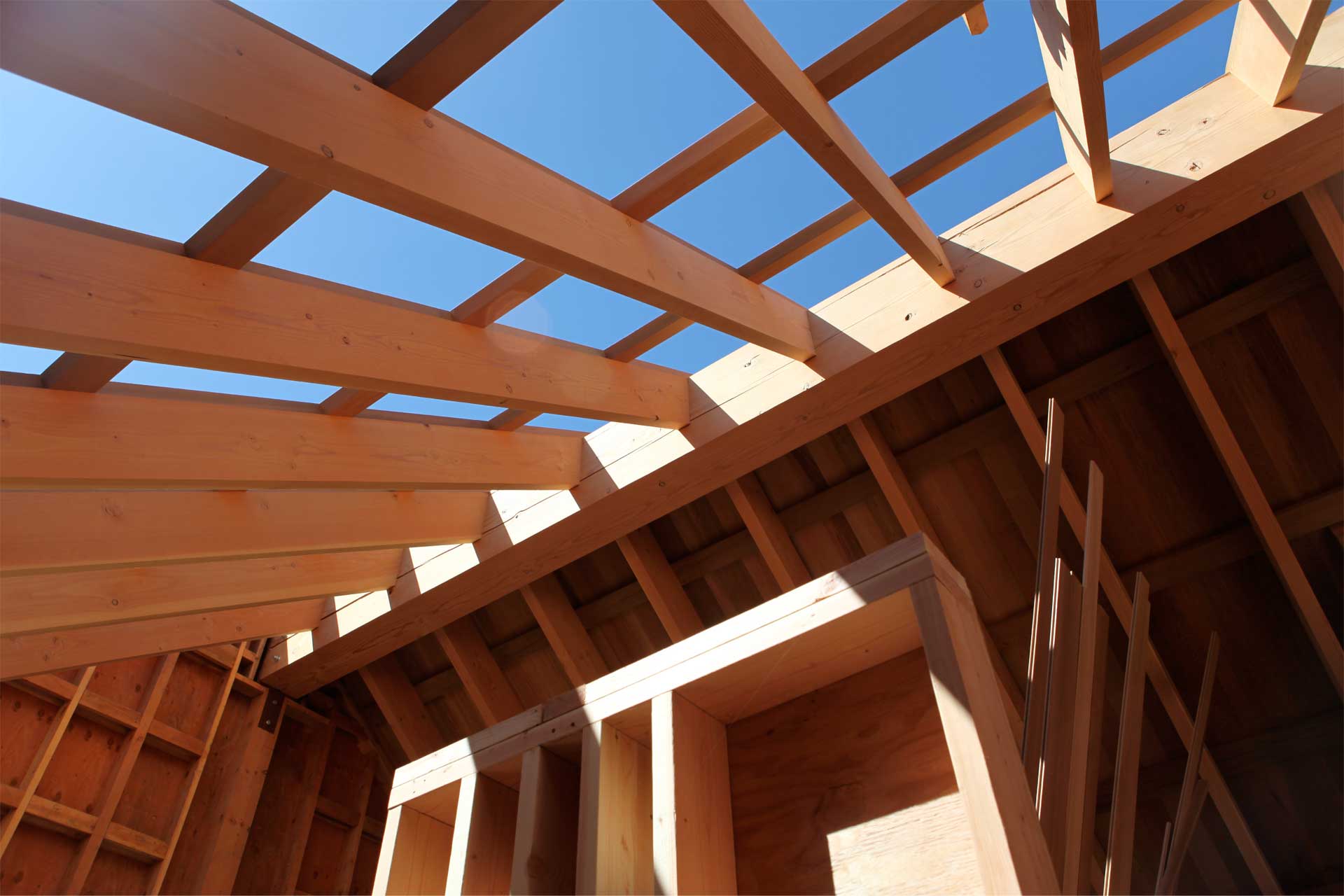INSULATION
Stated differently, the most important feature of an insulation material is how well it reduces heat flow from one side of the building enclosure to the other. The principal insulation characteristic that inhibits heat flow is thermal resistance (the inverse of conduction), also known as R-value. The primary insulation chosen – JM Spider – has a high R-value (4.2 per inch) to provide above-code levels of thermal resistance for the roof and walls. This cavity insulation (used in the spaces between studs and rafters) is supplemented in the roof by ventilating panels containing rigid polyisocyanurate foam ("polyiso") and in the walls by a layer of polyiso sheathing outside the framing, yielding totals of R-30 for the walls and R-56 for the roof.
In addition to R-value, a key consideration addressed during the selection process—thanks to Living Building Challenge—was avoidance of "red list" (i.e., hazardous) materials to the greatest extent possible. A number of effective insulation products contain halogenated flame retardants (HFRs), which are red-listed because many are either confirmed or suspected of being persistent bioaccumulative toxins (PBTs). JM Spider contains no HFRs yet is inherently fire-resistant. Polyiso contains an HFR which BuildingGreen.com reports is much less likely to be a PBT than the HFR in alternative products, according to the EPA’s PBT Profiler software. The Living Building Challenge exempts many such materials when their demonstrated benefits outweigh other concerns, as is the case with this application, where the product provides superior insulating performance. BuildingGreen.com characterizes polyiso as "the environmentally preferred rigid boardstock insulation for above-grade applications."
Other considerations include:
- Raw materials. JM Spider is mineral-based (its primary ingredient is sand, which is both plentiful and chemically inert), contains 25% recycled material (20% post-consumer and 5% post-industrial) and is formaldehyde free. Polyiso is petrochemical-based; however, a relatively small mass of petroleum is used to create a product that insulates extremely well, so much less energy will be used for heating and cooling. In other words, we are using a bit of petroleum to avoid using much more over the life of the home. The polyiso is also moisture-resistant, making it highly suitable for the exposed locations in which it will be used, where a fibrous insulation would not hold up well.
- Embodied energy. The selected insulation products are relatively high in embodied energy. However, the heating and cooling energy saved will very quickly offset this initial investment. For every kilogram of carbon dioxide emitted in the production of insulation, 330 kilograms of such emissions are prevented by the use of insulation over a 50-year service life. With this home’s life expectancy of 100 to 200 years, we anticipate even greater emissions savings over time.
- Atmospheric effects. The atmospheric concerns about insulation products relate to blowing agents - chemicals that make them expand which often have the potential to contribute to ozone depletion and/or global warming. JM Spider does not contain a blowing agent. The blowing agent for polyiso is pentane, which has an ozone depletion potential (ODP) of zero and a global warming potential (GWP) of 11, which is very low in comparison with other blowing agents. For example, HFC-245fa and HFC-134a, blowing agents that are used in other insulation products, have GWPs of 1,020 and 1,320, respectively.
- Recyclability. Neither product is at present readily recyclable, although recycling may become feasible in the future, based on demand; there are no notable obstacles to recycling other than the lack of infrastructure. Both products will be feasible to separate from other building components upon decommissioning which is a challenge with other insulating products considered “green” because they stick to everything thus limiting the wood you could reuse post deconstruction.
- The Project

